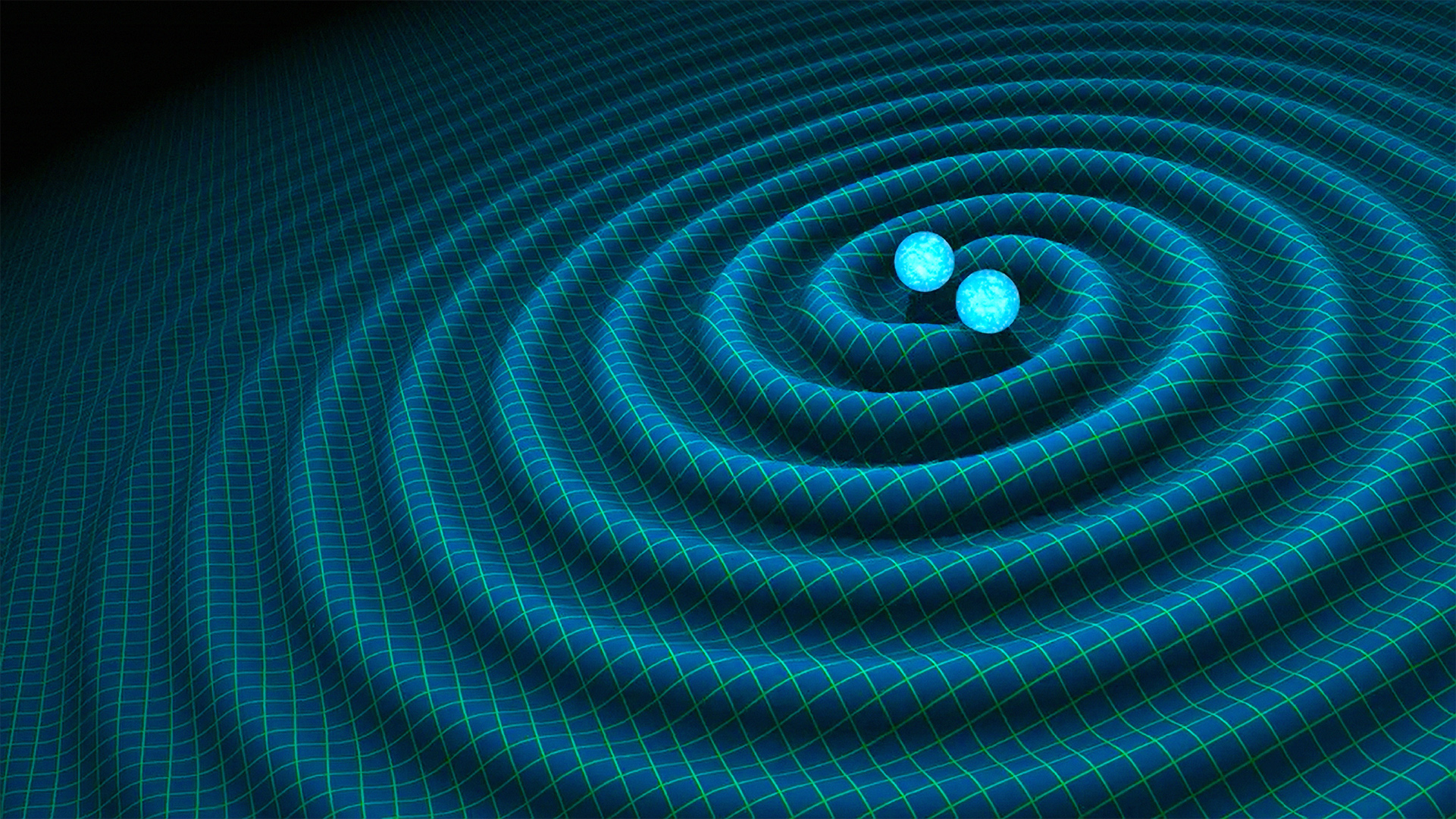What’s next for gravitational waves?
Gravitational wave physics could usher in a new era of cosmology — even sooner than expected
Dana Najjar • January 7, 2019

Artist’s conception of two black holes orbiting one another and producing gravitational waves. [ Image Credit: NASA ]
In September of 2015, detectors in Louisiana and Washington picked up a burst of energy that had been traveling toward our planet for more than a billion years.
They had finally found what are known as gravitational waves, or ripples in the fabric of spacetime predicted by Einstein’s general theory of relativity more than a hundred years ago. Since their detection, physicists have been exploring the ramifications of this new window onto the cosmos. And throughout the coming decades, they are hopeful that gravitational waves will shed light on some of cosmology’s biggest remaining questions.
Einstein predicted that massive and accelerating objects would distort space and time in their vicinity, sending out cosmic ripples that would eventually reach Earth. Although he predicted their existence, he could not have foreseen the cosmological mysteries these ripples would be harnessed to probe. While gravitational wave science has not yet done more than confirm the general theory of relativity, two promising new avenues could yield entirely new information about the universe.
One of the biggest remaining mysteries today is the composition of the universe itself.
Dark matter, so called because scientists can’t see it, is thought to account for 85 percent of all cosmic mass. Astronomers postulated the existence of dark matter once they found that the behavior of galaxies could not be explained solely by the amount of observable mass in them: some kind of invisible matter had to be exerting the gravitational forces that kept them from flying apart.
Though they agree it’s out there, scientists still have no idea what dark matter is made of.
Researchers at the University of Zurich think they’ve found a way to shed light on this fundamental question. In a 2018 study published in the Astrophysical Journal Letters, Tomas Tamfal, a cosmology PhD student, and his colleagues describe a computer simulation that could use gravitational waves to probe the nature of dark matter. They hope to use never-before-studied signals from galaxies composed of mostly dark matter to gain new insights into its properties. “We get a completely new window for seeing our universe,” says Tamfal, one which will hopefully solve long-standing mysteries about its makeup.
Understanding dark matter is just one way gravitational waves might usher in a new era of cosmology. Scientists at the University of Chicago claim that it could also help pin down the Hubble constant, a value for the expansion rate of the universe and consequently its age and size.
Measuring the Hubble constant requires knowing how far away objects in the universe are, and how fast they’re moving away. Over the past century, scientists have used two independent methods to make this calculation, arriving at two different results. “It’s confusing that we have two values,” says Hsin-Yu Chen, a gravitational wave researcher at Harvard University. This confusion drove scientists to find another way to measure the Hubble constant.
That’s where gravitational waves come in: Physicists want to use them to get a more accurate measurement of how far away objects are and consequently a new value for the Hubble constant. Specifically, they hope to use signals from the collisions of two massive stars, but didn’t until now know how long it would take to detect enough collisions for a meaningful measurement of the Hubble constant.
In a 2018 study published in Nature, Chen and her colleagues explain that it could be far sooner than anyone expected: “We might need 50 or 100 [detections], and that is the number we expect to see in five years,” she says.
Not everyone is as confident about the science that gravitational waves might yield or even the robustness of the 2015 finding, despite its recognition with a Nobel Prize in 2017.
For the past two years, a group of Danish physicists has been questioning the validity of their detection, but other physicists just aren’t convinced by their arguments. “It’s a good thing that other scientists question your results,” says Lisa Barsotti, a gravitational wave physicist at the Massachusetts Institute of Technology. But in this case, she clarifies, the naysayers are falsely claiming that the results are being taken on faith. The data are all publicly available, explains Barsotti, and Caltech has run workshops on how to analyze them.
“We are very confident that our results are correct,” Barsotti says. “This is one of those cases in which not all of the opinions are equal.”